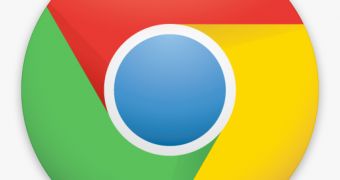Google split its developer conference this year between its two major platforms. Day 1 was about Android, day 2 was about Chrome. For the browser itself, Google didn't have too many announcements to make. It showcased how fast it has become and also revealed some impressive numbers, 160 million users, but that's about it, Chrome OS stole the show.
Google finally updated usage numbers for Chrome. The company has been saying that there are 120 million users for more than half a year now, during which time Chrome continued to grow tremendously.
The latest official number is 160 million users worldwide, up from 70 million at last year's Google I/O Conference. That's an impressive growth any way you look at it and this is while Internet Explorer has been loosing market share and Firefox stagnating at best.
Google boasts about hardware acceleration, WebGL and JavaScript performance
In recent months, much of the focus has been on hardware acceleration, WebGL and all of the things that make the browser faster. Google introduced a major update to its V8 JavaScript engine, dubbed Crankshaft, which pushed performance by a significant margin.
Meanwhile, Chrome is using the GPU to offload much of the graphics work. Not all platforms are supported in the same way, but Google is still expanding support with each iteration, the latest Chrome 12 beta for example adds support for hardware accelerated 3D CSS.
WebGL has become a web standard adopted by many browser makers and a lot of work has been done on starting to support it in the wild as well as to make sure that Chrome is ready when this happens.
These were the main touting points the Chrome team had during the day 2 keynote. However, after the keynote, some members of the team got together to answer questions about the browser and some interesting details about future plans came out.
Multiple profiles, tab and extension data sync
One feature that is already showing up in the most experimental builds is multiple profile support and this is one thing the team is very excited about. The feature will enable users to maintain separate browser profiles and switch between them in different browser windows.
Multiple profile support is linked to the sync feature in Google Chrome and this is also getting more updates. One of the most interesting ones is tab sync support, which is in the works but is not ready for testing yet.
Another very cool sync feature, Chrome will eventually enable developers to sync app data, making it possible to move preferences and other local data from on browser install to the other.
A new tab page is also in the works and the tab bar is getting a revamp as well. These features are still some time off. Native Client is making its big debut later this year, Google revealed, and Chrome OS will eventually support ARM chips as well.

 14 DAY TRIAL //
14 DAY TRIAL //